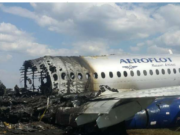Investigative authorities in 18 countries addressed a total of 88 aviation safety recommendations to the European Aviation Safety Agency (EASA) in 2016, EASA says.
The number of recommendations was essentially unchanged from the two previous years, EASA said in its 2016 Annual Safety Recommendations Review, issued in May. Click here to see the report.
The review noted that the 88 recommendations sprang from investigations of 39 accidents and 11 serious incidents, as well as one study. More than one-third of the recommendations were related to three major occurrences:
- The Aug. 23, 2013, crash of a Eurocopter (now Airbus Helicopters) AS332 L2 Super Puma during an approach to Sumburgh Airport in the United Kingdom’s Shetland Islands resulted in 20 safety recommendations. All 16 occupants survived, but four had serious injuries. The U.K. Air Accidents Investigation Branch identified two causal factors — ineffective instrument monitoring and failure to acquire visual references by the minimum descent altitude.
- The March 24, 2015, crash of an Airbus A320 in the French Alps resulted in six safety recommendations. The French Bureau d’Enquêtes et d’Analyses (BEA) said the accident, which killed all 150 passengers and crew, resulted from the copilot’s intentional actions.
- The Oct. 28, 2011, loss of control crash of a Piper PA-31T during an approach to Toulouse-Blagnac Airport in France resulted in four safety recommendations. All four occupants were killed in the crash, which the BEA traced to a right engine problem that led to asymmetric thrust.
More than 60 percent of the recommendations involved fixed-wing aircraft, and 33 percent involved rotorcraft, the report said; the remainder involved other types of aircraft.
The U.K. generated more recommendations than any other country — 25, followed by France with 18 and Austria with eight, the report said. EASA member states issued 86 percent of all recommendations, the report said.



